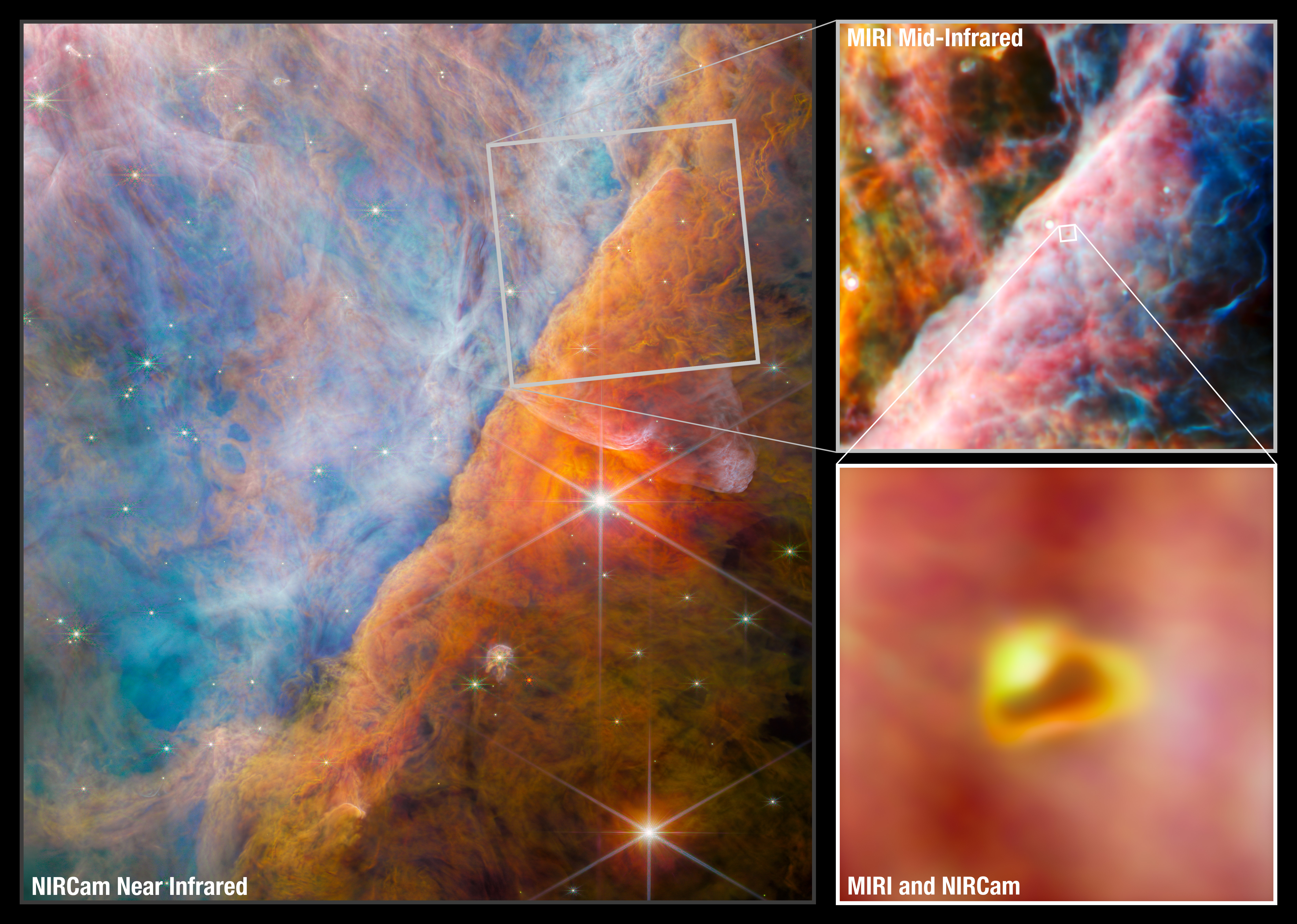The molecule methenium, also known as methyl cation (CH3+) has been observed in interstellar space for the first time. The detection comes from the Orion nebula, the closest region of massive star formation to Earth, and in particular from a protoplanetary disk known as d203-506.
Among the many young stars forming in this vast nebula, this young star system shows the presence of methenium. To understand how life came to be on our planet, we need to understand the chemical reactions that took place not just on Earth but also as the Sun was being born, and maybe even before then. Stellar nurseries are the place where some of these crucial reactions take place, where the building blocks of life are formed.
As molecules go, methenium is not one that is considered particularly important for life itself. But, it is believed to play a major role in the formation of many other molecules that are fundamental for life on Earth today.
The results, which are from the PDRs4ALL Early Release Science program, provide not only insights into the chemistry of these young planetary systems but also into the physics of these fledgling stars. These objects are emitting a lot of ultraviolet light, and a previous expectation was that this radiation would break these molecules apart.

Different views of the Orion Nebula from JWST, including a zoomed view of the stellar system d203-506.
Image credit: ESA, NASA, CSA, M. Zamani (ESA), and the PDRs4All ERS Team
The discovery of methenium in baby systems such as this instead gives credence to an alternative theory: that the ultraviolet light is actually giving the elements in the protoplanetary disk the energy for such a chemical reaction. Once methenium is in place, the ultraviolet light then allows for more complex carbon chemistry to take place.
“This clearly shows that ultraviolet radiation can completely change the chemistry of a protoplanetary disk. It might actually play a critical role in the early chemical stages of the origins of life,” lead author Olivier Berné, of the French National Centre for Scientific Research in Toulouse, said in a statement.
This is not the only surprising chemical signature in the d203-506. Actually, it is the lack of a chemical signature that has left the team perplexed. They couldn’t find any water in the system – something truly peculiar. JWST, with its keen eye on the cosmos, will continue to study this and many other stellar nurseries.
The study is published in Nature.
Source Link: Special Carbon Molecule Spotted By JWST In The Orion Nebula For The First Time